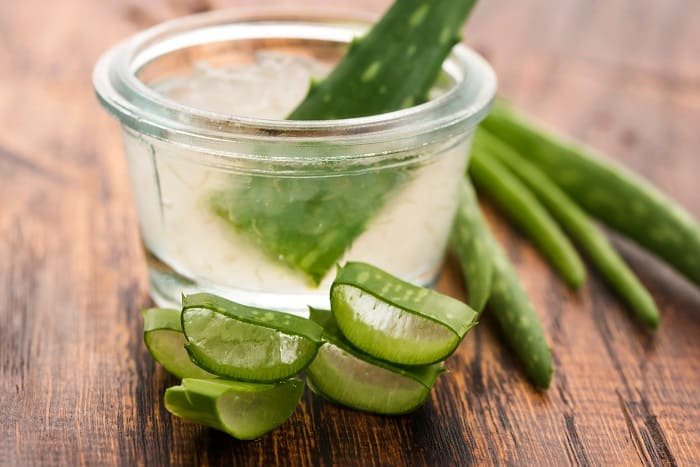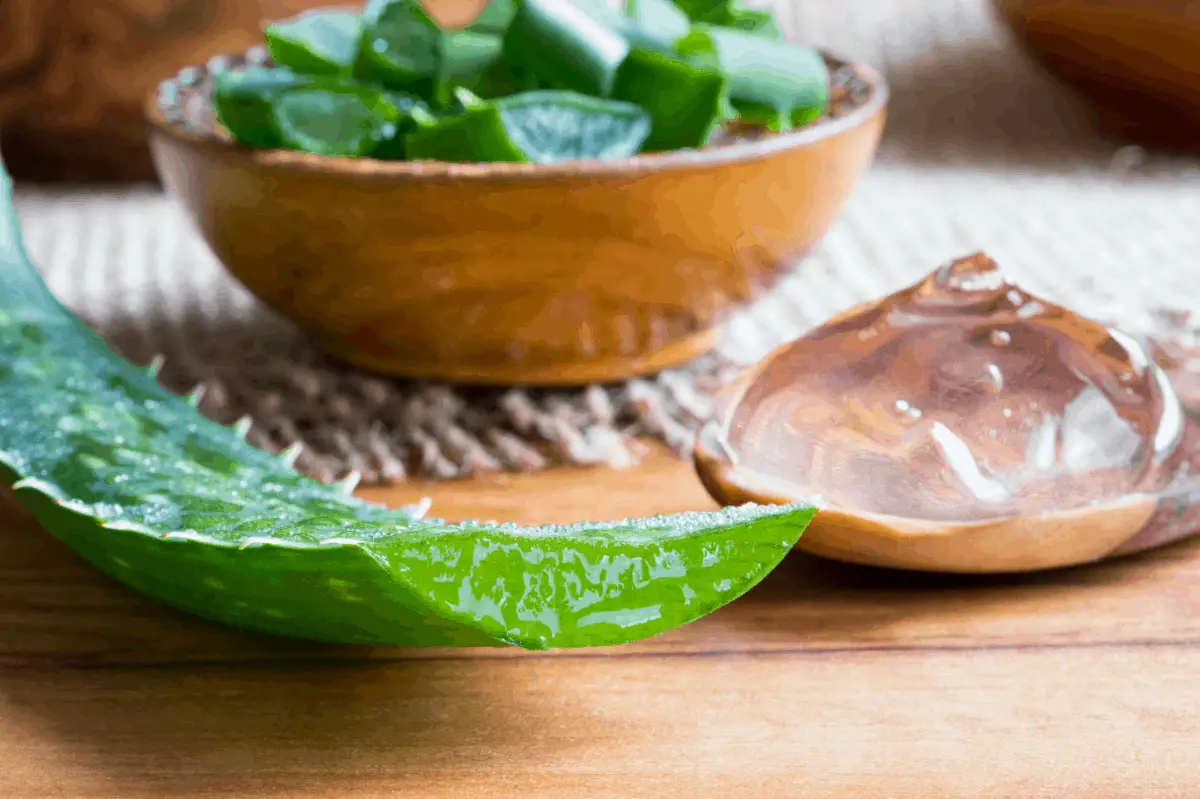Last Updated on October 16, 2024
While Aloe Vera may be a miracle worker and a potent home remedy for treating different conditions, a lot of people worry about the safety of ingesting Aloe Vera.
The history of Aloe Vera dates back to the ancient times where it was used to treat dental plaques, sunburn, and to lower blood sugar levels. It is also worth mentioning that the plant contains more than 70 beneficial active compounds, which include amino acids, enzymes, vitamins, fatty acids, and minerals.
So can you put Aloe Vera gel in your mouth? You may ask. We have taken the liberty to answer the question and more below.
Table of Contents
Can You Put Aloe Vera Gel in Your Mouth?
Aloe Vera consists of three useful parts, the skin, latex, and the gel. The gel is the part that is mostly used, either for treating skin related conditions or for making a lotion or balm. When the gel is properly prepared, it can be eaten and is entirely safe.
The taste of Aloe Vera is refreshing, which makes it a good addition to an array of recipes including salsas and smoothies.

How to Prepare Aloe Vera Gel?
You can easily prepare the Aloe Vera gel, by simply cutting the top of the plant and the side of the leaves. Once exposed, you will need to slice off the side skin and then remove the gel by cutting it into smaller pieces.
You will need to be careful to avoid adding dirt to the gel or collecting any of its latex, as that can alter the taste of the Aloe Vera gel. The latex is the yellow liquid that is noticeable between the leaf gel and the skin. When the latex is consumed in excess, it can lead to side effects, so you want to take precautions to ensure none of it gets in contact with the gel.
On the other hand, the skin of the Aloe Vera is completely edible. You will have to wash it properly and soak it in water for 30 minutes if you find the skin too hard to chew. If you have to make use of the leaves, make sure to obtain them directly from the plant, and no other species of Aloe.
Eating Aloe Vera Gel
You can eat the leaves of the plant raw, or add it to a salad or side dish. It is also safe to drink the gel. There are claims that the gel is useful in weight loss and aiding digestion. Diabetic patients can also benefit from the Aloe Vera gel. You should know that the gel has no taste, so you can add it to a juice blend or drink it like that. you should watch out for any side effects such as constipation, and let your doctor know immediately you notice any complications.
Benefits of Eating Aloe Vera
Aloe Vera is highly beneficial to the body in so many ways, but you must consume the gel from the leaf and nowhere else. You should know that there are claims that other parts of the leaf are equally beneficial, but more research is needed to support the claims.
Here are some of the benefits of eating Aloe Vera:
- May Improve Memory – In an animal study, it was discovered that Aloe Vera contains compounds that may help to improve memory and learning, while also reducing depression.
- Fight Dental Plaque – Aloe Vera is commonly used as a mouthwash to fight dental plaque, so you can use it occasionally to improve your dental health.
- Contains Antioxidants – Eating Aloe Vera regularly can help to raise the antioxidant levels in the blood. Antioxidants play an important role in reducing the damages caused by free-radicals which can result in chronic diseases.
- Reduce Blood Sugar – There is also the belief that Aloe Vera gel may be useful in reducing blood sugar levels of the body, and by so doing, increase insulin sensitivity.
Potential Side effects of Eating Aloe Vera
Now that you are aware of the benefits of Aloe Vera, it is also right that you know about the side effects of eating Aloe Vera. It is the latex which is the yellow substance obtained from the plant, that is unfit for consumption. You should be careful when extracting the gel from the plant not to add the latex, so as not to contaminate the mix.
Long-time consumption of the Aloe Vera latex can result in conditions such as kidney problems, muscle problems, stomach cramps, and difficulty breathing. There are also claims that prolonged use in high doses can be fatal.
Pregnant women should also avoid consuming latex from Aloe Vera s it can irritate the uterine walls resulting in miscarriage. The latex is also not safe for people who are suffering from digestive conditions such as Crohn’s disease, and Inflammatory Bowel Disorder (IBD).
You should avoid consuming any Aloe product if you are taking medications for diabetes and heart or kidney diseases, so as not to worsen the side effects of your medication.
It is also worth mentioning that you shouldn’t eat Aloe Vera skincare products. Although they may contain the gel, they usually include other contaminants that make it unfit to swallow.
How to Store Aloe Vera?
Storing Aloe Vera for use later isn’t all that a big of a deal; with proper preservation, you can store your Aloe gel for use later. You can do this by:
- Freezing the Gel – You can preserve your Aloe Vera gel by freezing it. You should use an ice cube tray instead of freezing it into a single block. This way, you can easily take a few cubes for use instead of defrosting the entire block.
- Mix with Honey – Mixing your Aloe Vera gel with honey and storing it in a cool dry place can get it to last more than 6 months.
- Blend with Vitamin C – You can also preserve your Aloe Vera gel by blending it with vitamin C tablets.
It is best to store your juice in the refrigerator so as it can stay fresh until you wish to make use of it.
Conclusion
The skin and gel of Aloe Vera are safe to consume; it is the yellow latex you want to avoid as it can lead to a serious complication when consumed in excess.
We welcome any questions and contributions, feel free to hit us up on the comment section.

Lacey is an environmental enthusiast and passionate advocate for living green and sustainable. She believes that everyone can make a difference, no matter how small. Lacey is dedicated to reducing her own carbon footprint and educating others on the importance of living greener. She is an advocate for green energy and sustainable practices. She is an active member of her local community, volunteering with local conservation efforts, and taking part in sustainability initiatives. Lacey is a firm believer that the only way to ensure a sustainable future is to work together and make small, but important changes.

